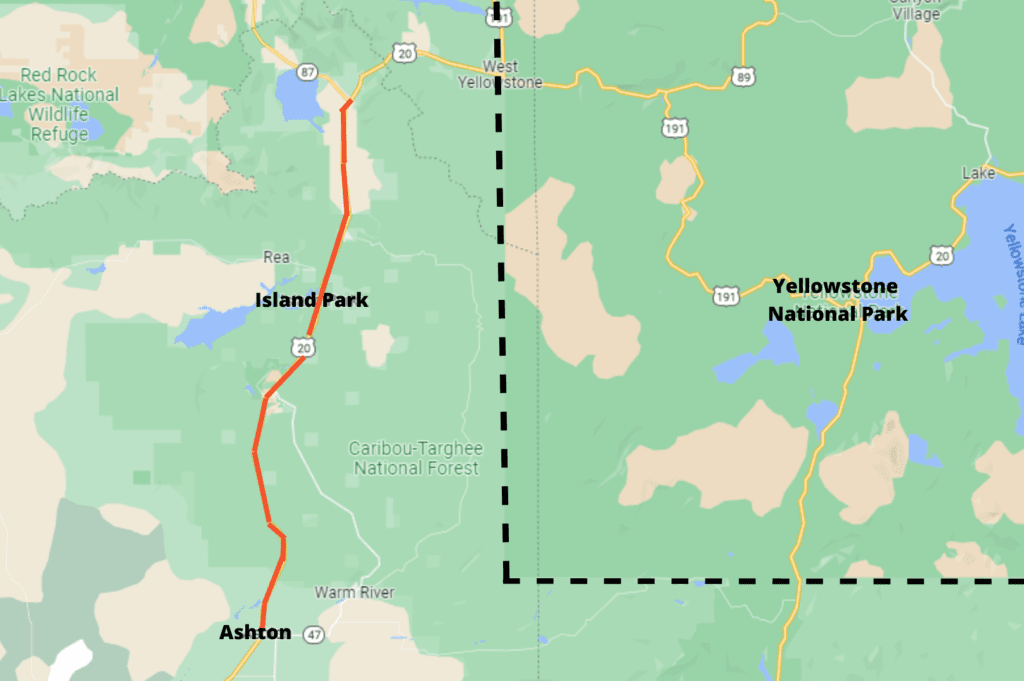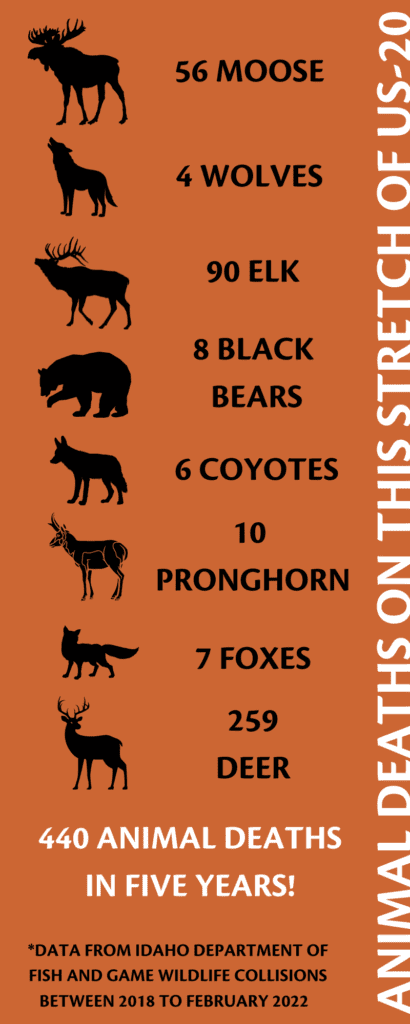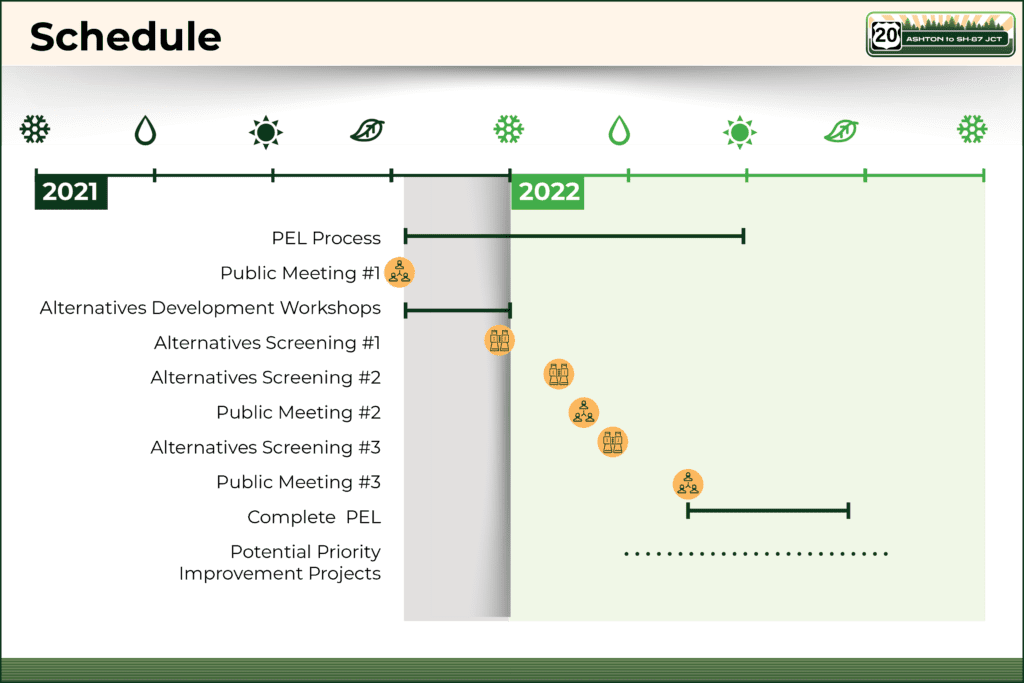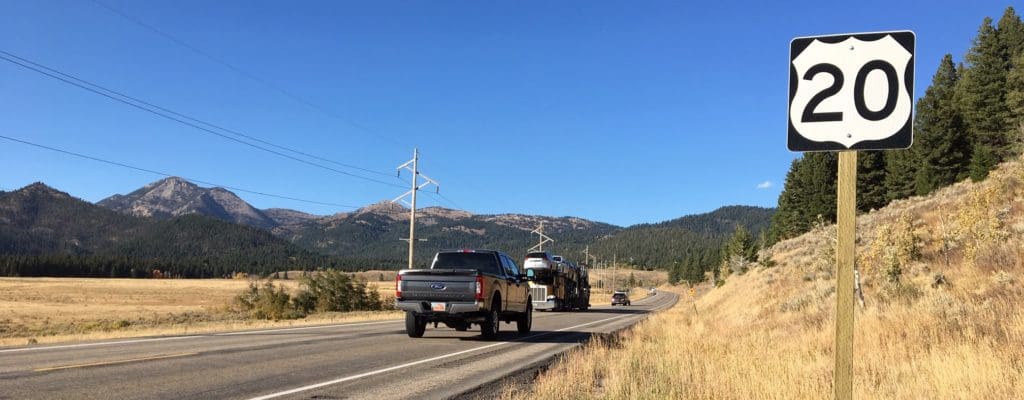Planning for connectivity in the future of US-20
Idaho’s Highway US-20 is a busy road that borders Yellowstone National Park to the west. It is the main road for the Island Park community, and route to regional towns such as Ashton, Ennis and West Yellowstone.
As visitation to Yellowstone has grown, this stretch of road has seen an immense increase in traffic, leading to an increase in crashes and an increased barrier to wildlife movements. According to the Idaho Transportation Department, summer traffic averages along US-20 have increased about 125 percent, from about 8,000 vehicles in 2018 to 10,000 vehicles in 2021.

Better planning = safer road for all
To address these concerns, Idaho Transportation Department is conducting a Planning and Environment Linkages (PEL) study this year – your engagement is part of that process.
This is an opportunity for you to get involved and make roads safer for you and your family as well as wildlife — now and for future generations.
Our wildlife, people and landscapes thrive when better planning helps them stay connected.

Why this area is important for wildlife
Yellowstone is a haven for western America’s wildlife. Elk, bison, wolves, deer, grizzly bears and more travel in and out of the park boundaries as they find food and habitat.
Once part of an interconnected landscape, Yellowstone National Park is being isolated from the larger wild landscape as roads, communities and fences prevent wildlife movements. Making sure wildlife can safely and easily travel across this region is important for sustaining healthy wildlife populations who need to roam.
According to the Idaho Department of Fish and Game’s wildlife collision data between 2018 to February 14, 2022 there were 440 animal deaths reported along this stretch of US-20. This includes: 56 moose, 4 wolves, 90 elk, 6 coyotes, 8 black bears, 10 pronghorn, 7 foxes and 259 deer — that’s a lot in the past five years!
Why your participation in the PEL process matters
A PEL study identifies transportation issues and environmental concerns, and identifies and analyzes highway design alternatives — to address concerns such as congestion, safety, and travel time.
The PEL process is a way for the state to consider environmental, community, and economic goals in a transportation plan. This collaborative process brings in many perspectives during the decision-making, design and construction phases. Comments are collected from the community, businesses, scientists and more.
Right now, ITD is conducting a PEL study along US-20 from Ashton to the Hwy-87 junction. The study is estimated to wrap up in winter 2022.
This process is your opportunity to make roads safer for people and wildlife.
PEL Process Engagement Schedule

If you care about human safety and wildlife in the area, we highly encourage you to attend and participate in the PEL process. These decisions will determine road safety and what the future holds for US-20. These meetings allow your voice to be heard. This includes if you live nearby or have used this highway to visit Yellowstone.
Learn more:
- The Idaho Transportation Department Ashton and the ID-87 Junction site
- US-20 Ashton to SH-87 JCT Planning and Environmental Linkages (PEL) process site
Questions? Email us at: info (at) y2y (dot) net.
Our work on this possible with support from the Cross Charitable Foundation


